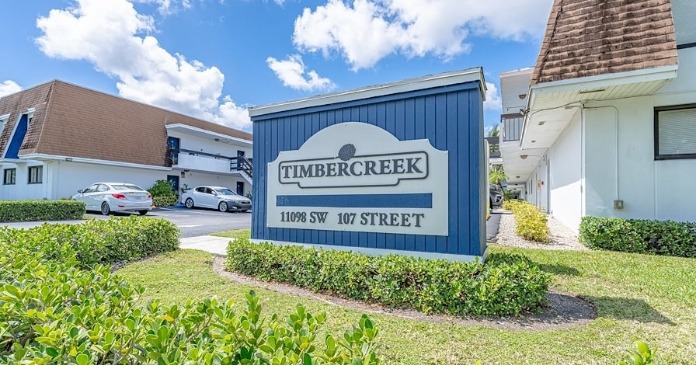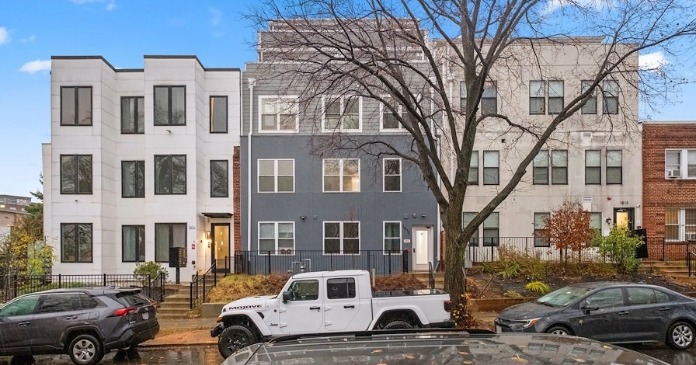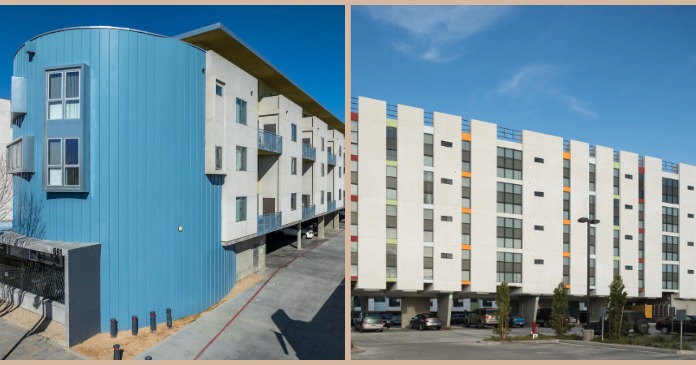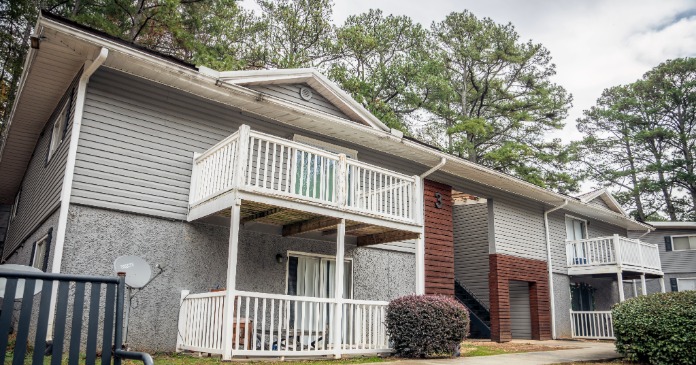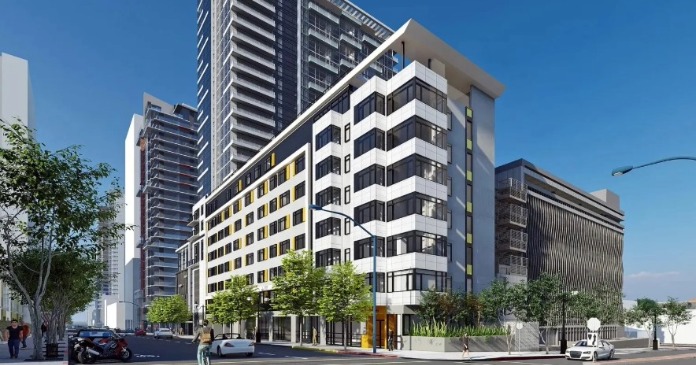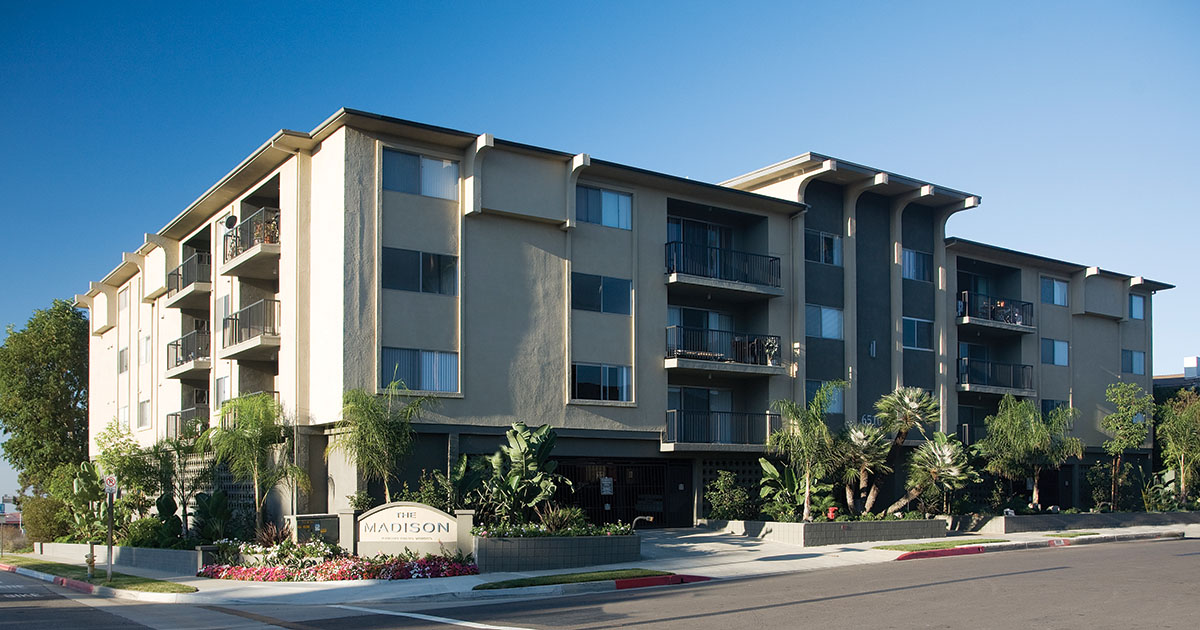
“The market there has been relatively steady, certainly relative to other markets in the U.S. that have seen a lot more volatility,” said Alliance Residential CFO Jay Hiemenz in early May, a couple of weeks after the company announced the acquisition of the mortgage note on the 228-unit, 10-story high-rise Foxwood Place from the large national life insurance company that loaned Fairfield Residential the funds to purchase and upgrade the property that was built in the 1970s.
“When this opportunity came along, we were attracted to it, given its close-in location and the fact that we thought it still had some improvements that could generate good returns,” he said of the property on which Fairfield was underway on the rehab, but halted that work when the financially troubled merchant builder filed Chapter 11 bankruptcy at the end of last year.
And the encouraging fundamentals of the market, where the employment picture is projected to be solid over the next two to three years, added to the attractiveness of the deal, said Hiemenz, who founded the Phoenix-based fully integrated multifamily ownership, development and management firm with Alliance Residential President Bruce Ward in 2000.
Since then, Alliance Residential has become the 15th largest apartment management company in the nation and the third largest multifamily development company, with 19 regional offices that span the country, the Reston, Va., office being most recently opened to serve the D.C. market.
Inside the Beltway
The Foxwood acquisition typifies a couple of Alliance’s investment strategies, which include purchasing notes and acquiring completely and partially constructed properties. “The note purchase represents an excellent opportunity to acquire the property at an attractive level while still providing upside through the capital program execution,” said Alliance Managing Director of Investments Russ Kindorf, when the deal closed. Following the note purchase, Alliance foreclosed on the property, with plans to complete the capital renovation that Fairfield had started there, acquiring the mortgage note for the deal at a discount of about 80 cents on the dollar.
Hiemenz expects an all-in levered IRR of around 25 percent on the rehab for which the current budget is around $7,000 per door on a blended basis, since some of the work already had been completed by the former owner. “We believe that, after we get it stabilized and the capital in place, it’s probably a seven percent unlevered yield on cost,” he said, estimating the cap rate on the acquisition at a low six percent on trailing 12-month numbers for the asset he sees as a solid B in an A-minus location.
“It’s a good workforce housing property that is value-oriented, but still inside the Beltway. So, I think what was really attractive about it to us was that, for a pretty economical basis we could get a property that was inside the Beltway and then improve it and not feel like we were over-improving it, given its strong location,” said Hiemenz of the asset that offers convenient access to the nearby Landmark Shopping Mall and the Van Dorn Metro Station.
In addition to the interior work left unfinished by Fairfield, Alliance plans some exterior improvements, like sprucing up the property’s curb appeal by adding some life to the landscaping to complete the rehab that he believes will justify rent increases of $80 to $100 per month on the units that are renovated.
A complex capital plan
“Whenever we look at capital plans, we’re trying to get a 10 to 12 percent return on the new capital that’s invested. This one’s a little trickier, because we’re doing different things to different units. It’s not a uniform capital plan for each of the units,” Hiemenz explained. He said Alliance won’t rehab units that already were renovated to a satisfactory standard, while others among the studio, one- and two-bedroom apartments will go through full-scale renovation, including new flooring and kitchen and bath upgrades with new counter tops and appliances, as units turn.
When Alliance took over the property, occupancy had fallen off a bit and fell a bit more to around 86 percent after the new owner evicted non-paying and otherwise undesirable residents. “With any transition, there’s always going to be some fall-off in occupancy, particularly given the distressed nature of this one,” Hiemenz said, explaining the two-weeks-free concessions Alliance currently is offering new renters at Foxwood.
Ordinarily, he said, Alliance wouldn’t be offering concessions in the healthy D.C. apartment market, where concessions are averaging between zero and two free weeks. “But, we’re doing it more to push velocity and get it back stable, so we’re probably being a bit more aggressive,” he said, predicting that the concessions will start to burn off when occupancy stabilizes at around 95 percent.
Although D.C. is seeing a lot of new multifamily product deliveries, Hiemenz isn’t worried about competition from the mostly upscale apartments coming online. Foxwood is at a price point that isn’t competing with the new product, he said. The units, which range from 457 sq. ft. studios to 1,120 sq. ft. twos, rent for $910 to $1,600. Amenities at Foxwood, which will be re-branded as an Alliance-owned and managed asset under the Broadstone community name, include a fitness center, a large clover-shaped swimming pool, a resident lounge with billiard tables and a couple of saunas.
The DC goal
Alliance Residential’s goal for the D.C. market is in the neighborhood of 2,500 units, either acquired or developed, within the next three to five years. “Depending on what happens with the market, we may have more production than that, sell some as we see opportunities, hold some others, so I expect maybe 3,000 to 4,000 units either acquired or developed, stabilizing at a hold portfolio of around 2,000 to 2,500 units with a similar footprint for the fee-management side of the business.
“We try to have the same footprint for fee management as we have for investment, so we’ve hired management personnel and we are expending those as we take on more opportunities in the market,” he said.
Turning to the development side of the D.C. coin, the CFO explained that the two new land acquisitions, sourced through the company’s relationships with lenders in the area and nationwide, were similar to the Foxwood acquisition, in that both suburban garden-style projects still were in the entitlement process and acquired from lenders that had taken control of the properties. “So, again, we feel like we got a good basis and the yields seem to make sense,” he said.
Alliance Residential’s development team hopes to start on the 300-unit apartment community in Lorton, Va., a suburb about 25 miles south of D.C., near the end of Q2. The property now is fully entitled and the former owner had just finished the parking garage when the credit crunch hit. “It was pretty far along in the entitlement process, but there were a few things we had to work through and fix,” Hiemenz explained. The 200-unit deal in Odenton, a suburb about half-way between D.C. and Baltimore, still has some planning issues to sort out, which may push the ground-breaking into 2011.
Looking to the future, the company has some land positions around the country that could see ground-breakings later in the year, but, like many in the multifamily development business, Alliance is waiting and watching the markets to see where and when the economic recovery that appears to be getting underway will have the strongest impact.
“We were pretty encouraged by the market in the first quarter, so, if that trend continues and concessions burn off a bit, so effective rents increase, I think we’ll start a couple more projects this year,” he said.
Expanding across the country
As the company prepares for the entrance of into the market of the echo boomers—who are expected to comprise 45 percent of renters by 2015, according to the National Multi Housing Council—coupled with a supply/demand picture that’s better than it’s been in years, Alliance has expanded operations into two new markets where that deluge of college grads to come likely will want to live.
In Q1, the company opened new regional offices in the Pacific Northwest and Central Florida. Working out of the new office in Seattle, Christy Throm, Alliance VP of Operations for the Pacific Northwest, will oversee both the Seattle portfolio that includes seven communities and the Portland portfolio that consists of just one asset, so far—the 152-unit, Broadstone Enso, which Alliance built and delivered first units in March. The six-story luxury apartment community that broke ground in November 2008 in Portland’s burgeoning Pearl District, is the residential component of the mixed-use project that includes 11,500 sq. ft. of ground-floor retail/office space.
The new office in Orlando adds to Alliance’s Southeastern presence, which includes six properties in Atlanta and the 228-unit upscale Broadstone Beach House that the developer built in Jacksonville Beach, Fla., on a site the company bought in 2007. The community that offers one-, two- and three- bedroom units that range from 772 sq. ft. to 1,452 sq. ft., with rents ranging from $990 to $1,275, was completed at the end of 2009.
In addition to the three newest offices, Alliance has offices in Phoenix—its headquarters—California, Colorado, Georgia, Nevada, New Mexico, Texas and Boca Raton, Fla., that oversee the company’s 45,000 units, 35 percent of which are owned by Alliance, which provides third-party management services to the other 65 percent.
And Hiemenz doesn’t expect the company to add any more new markets in the near-term. “I think we’re pretty comfortable in the markets that we’re operating in. The types of opportunities we look at in each market are very different, so we’re actively looking at opportunities in all our current markets and want to add to our positions in land and want to add to our positions by doing apartment acquisitions—both core and value-add,” he said.
Golden State buy
The company’s most recent addition to its owned portfolio is The Madison, a 90-unit apartment community on the Palos Verdes Peninsula in the affluent city of Rancho Palos Verdes, an ocean-side suburb of Los Angeles. Alliance paid a partnership of Pacific Property Co. and GMAC Commercial Mortgage Corp. $22.86 million for The Madison, Alliance’s fourth West Coast multifamily acquisition since mid-2009. The asset, which was 98 percent occupied at COE, is located on the cliffs overlooking the Pacific Ocean and more than 50 percent of its units in the early 1970s vintage community have 180-degree ocean views.
“Given the unique ocean view location and significant constraints to building any new properties in the area, coupled with area incomes of over $115,000 per household, we believe this to be a strong investment for an aggressive capital improvement and repositioning program,” said Drew Colquitt, Alliance managing director for Southern California, when the deal closed in mid-May.
Berkshire Property Advisors is the equity partner in the deal and Alliance is pleased to have an experienced financial partner that understands the challenges and rewards associated with performing an extensive capital plan on a uniquely located property, said Hiemenz.
Upscale finishes like stainless steel appliances and wood-plank style flooring are planned for the apartments that offer above-average size balconies or decks and full-size washers and dryers will be part of the vintage community’s facelift. The two common-area pool courtyards also will be upgraded with new boutique-hotel-quality furnishings and finishes.
The Madison acquisition brings the company’s portfolio to 1,500 units in the southern half of the Golden State, where Alliance also is evaluating or in escrow on another 500 units and is looking to expand its portfolio there, particularly in the greater Los Angeles and San Diego markets.
For the past couple of years, until its recent buying spree, Alliance’s focus has been on asset management of its existing portfolio. “We have about a $2.6 billion dollar portfolio that we now have in good shape,” said Hiemenz, revealing his dry sense of humor by reporting, “We actually sold an asset in Dallas last in April, so we wouldn’t forget how.”
There will be a few more sales out of the portfolio, while the company looks for more acquisition opportunities, he said, adding that last year Alliance hired Kindorf out of the banking community to focus solely on opportunities like Foxwood that involve the sale of notes rather than real estate.
“We’re actively seeking new opportunities and have been able to capitalize on some of them thus far and hope to continue,” said Hiemenz of the company’s near-term heavy focus on acquisitions. “I think you’ll probably see development start to creep back into the equation, but it will be primarily acquisitions this year,” he predicted.
Author Peggy Shaw





